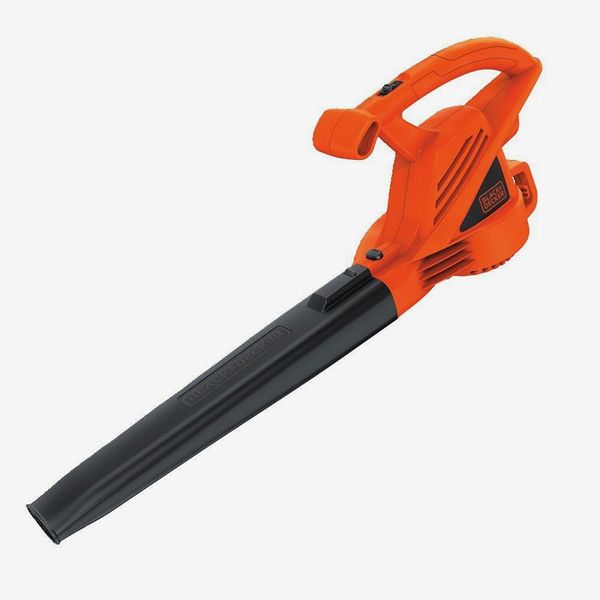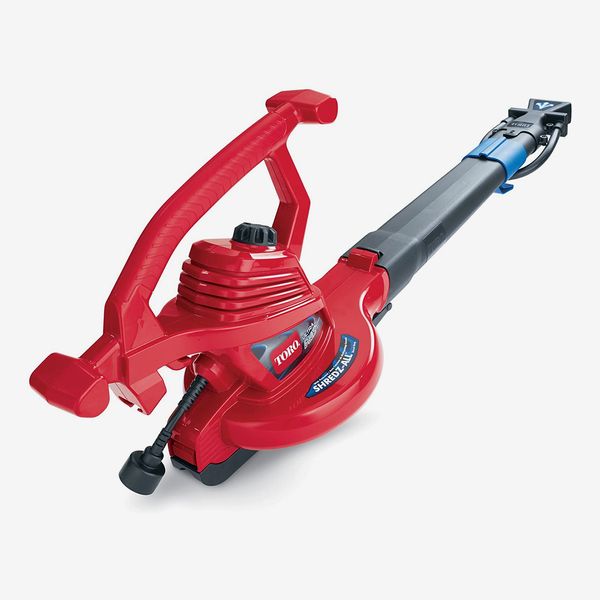
Got a yard littered with leaves? You could grab a rake. But you really should use a leaf blower instead. According to head-to-head testing, using a leaf blower lets you clean up leaves about twice as fast as you could using a rake.
And when you start looking for the best leaf blower for your needs, you should consider four factors over all others: the blower power you need, which is determined by property size and the type of debris to be cleared; the budget you have to spend; the blower type; and the blower’s power source.
Jason Wilk, senior product manager with ECHO, explained the basics of different blower types, which are handheld, backpack, and walk-behind. “All three come with their own pros and cons,” he says. Handheld blowers are the lowest in cost; are well suited for smaller yards; and are lightweight, compact, and easy to store. Backpack blowers are more powerful and ideal for big yards or properties with multiple large trees. Then, just like the name suggests, a walk-behind blower is designed so that the user can push and guide the tool from the rear of the unit as it clears leaves and debris. This is a great choice for large properties and people who may have limitations when it comes to holding a blower or strapping one to their backs.
When it comes to the power source you use for your leaf blower, Sara Bendrick, licensed landscape contractor and STIHL spokesperson, advises, “Battery blowers are a great option for homeowners because they are reduced-noise and low-maintenance and have zero exhaust emissions. They are typically easy to start and require no mixing of gas and oil.” The drawback of electric blowers, however, is that they can’t yet match gas blowers in terms of power.
Backpacks and walk-behind blowers are almost always gas powered — and, consequently, ecological abominations. According to Bloomberg, using a gas blower for an hour produces as many smog-forming chemicals as would driving an average sedan more than 1,000 miles. Also, most gas-powered blowers put out between 80 and 90 decibels of noise, per Leaf Score, with 85 decibels being the threshold above which damage to the ear is likely. Based on those two factors, we’re leaving most gas-powered blowers outside the bounds of consideration for this article, because they cause more trouble than their efficacy is worth. But as, indeed, gas-powered leaf blowers are superstrong, blasting out wind speeds in excess of 200 mph, per The Rop Shop, we have included a select few.
Best overall leaf blower
I’ve been using this battery-powered leaf blower around my own home for three years and I absolutely love the thing. For the average-size property not dotted with dozens of deciduous trees, the BGA 57 — and its 25-minute-per-charge run time — is more than enough machine. The 123-mph airflow lets me clear my yard, patio, and driveway fast, even moving wet leaves when I get good and close to them. The blower is also lightweight enough for me to wield it with one hand for extended periods of time as I raise it up high while cleaning gutters from a ladder top or crouch as I’m getting under hedges or patio furniture. And it’s clean and relatively quiet, with that battery-driven motor only rated at 59 decibels.
Best (less-expensive) overall leaf blower
This battery-powered leaf blower costs less than $120, and that’s with a battery and charger included. That price is very hard to beat for a blower with a better than four-star rating with more than 6,000 ratings on Home Depot’s website. Now, to be sure, this isn’t the most powerful blower ever, and mark landscape contractor Bendrick’s words: “A handheld blower will do the trick if you are moving grass clippings off your sidewalk or clearing your patio. However, moving wet leaves in your yard may need a more powerful option.” But the 90-mph airflow will work just fine for smaller properties not beset by heavy leaf fall. Also note that run time is short here, at just 12 minutes per battery.
Best corded leaf blower
“A quality leaf blower will have consistent power and performance, and a good ergonomic design that allows the user to comfortably operate the unit,” says Bendrick, and those points describe this corded tool from Worx perfectly. The blower has two speed settings, the higher of which is 110 mph, and it can move an impressive 600 cfm — or cubic feet of air per minute, the standard rating of fan power. That matches many handheld gas blowers and is even within striking distance of the output of some backpack blowers. And it weighs just over six pounds.
Best budget leaf blower
This plucky little blower from Black + Decker is only $32, which is amazing for a unit that has a 4.6-star overall rating with more than 24,100 ratings posted on Amazon. It is small with only a 180 cfm rating, so it’s just not suitable for large properties, but for clearing leaves off the stoop, patio, or deck, it’s a great choice. It also has very good air speed — different from the relatively low volume of air it spits out — getting up to 180 mph, which can even lift stubborn, sodden debris.
Best combination leaf blower/leaf vacuum
I used this exact tool for half a decade while living in California, and during its working life it not only helped me clear veritable mountains of pine needles and leaves, it let me suck up and pulverize plenty of lawn debris too. That’s because this is not just a leaf blower but also a vacuum that can draw leaves, pine needles, and even small twigs right up through its vacuum tube, send them through its blades, and then deposit the shredded bits into a removable collection bag. I always loved the versatility of the UltraPlus, and appreciated how finely the airflow could be directed when in blower mode. Its 350 cfm is a bit lacking for larger properties, but the dual function makes up for it — at least it did in my mind. And for the record, it didn’t die on me; it just didn’t come along for a cross-country move.
Best backpack blower
Frank Rossi, chief science officer with lawn-care company Sunday, says to avoid gas-powered blowers with two-cycle engines, which are “some of the biggest polluters we have due to mixing oil and gas together.” The Makita backpack blower uses a much more efficient and cleaner-burning four-stroke engine, making it a more acceptable option for those who need the power a gas-powered blower can deliver. It can blast out air at nearly 200 mph, and with its 60.9-ounce gas tank filled, it can run for between two and three hours, depending on how much you push the throttle. The max noise level is 70 decibels, loud but hardly dangerous to your ears — or your neighbor’s nerves. And at 20 pounds with comfortable, adjustable straps, it’s light enough for most anyone to use.
Best walk-behind gas blower
Again, this is a four-stroke gas-powered leaf blower, so while hardly as clean as any corded electric or battery blower, it’s a lot better than the two-stroke models out there. In terms of air volume, this big, powerful 224 CC engine almost doubles the output of any backpack blower, cranking out 1,300 cfm. That airflow can be adjusted to many different angles, and the airspeed — at a max of 160 mph — can be precisely controlled. And as Jason Wilk noted, a walk-behind blower can be a great choice for homeowners with very large properties and/or for anyone who has physical limitations that might make holding a blower or strapping on a backpack unit infeasible. While this is a pricey unit, it’s also well made and reliable, and Champion Power Equipment stands behind its products: Note the three-year-long warranty as evidence of that.
The Strategist is designed to surface the most useful, expert recommendations for things to buy across the vast e-commerce landscape. Some of our latest conquests include the best acne treatments, rolling luggage, pillows for side sleepers, natural anxiety remedies, and bath towels. We update links when possible, but note that deals can expire and all prices are subject to change.
Every editorial product is independently selected. If you buy something through our links, New York may earn an affiliate commission.













